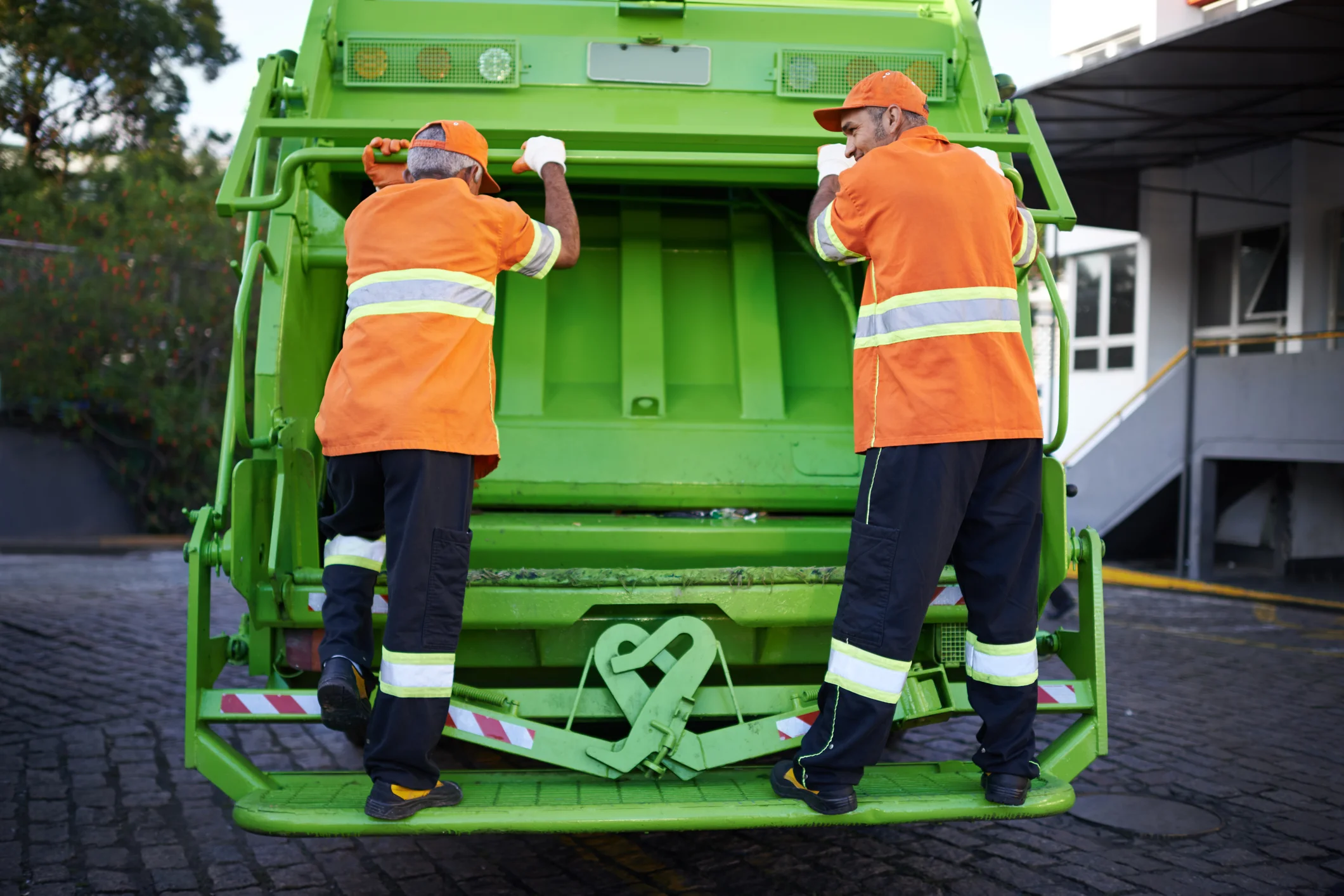It’s dangerous to be a “Trash Man”. According to the Solid Waste Association of North America, there were 7 fatalities to sanitation workers in the first 10 days of 2018. In addition, the Bureau of Labor Statistics has determined that refuse and recyclable materials collectors have the 5th highest fatal work injury rate among civilian occupations. Then there are the non-fatal injuries; sprains, strains, and over-exertion injuries in solid waste collection are 10 times more likely, due to jumping on/off trucks, handling heavy loads, and being backed over by drivers. Exposure to potentially dangerous materials is another major concern in the solid waste industry.
Although OSHA regulations don’t expressly govern sanitation employees or vehicles, it does inspect industrial employers if fatalities occur. The American National Standards Institute (ANSI) has published Safety Standards for Mobile Refuse Collection and Compaction Equipment, a group of procedures that offers worker guidance:
Ride only in the vehicle cab or on steps specifically designed for riding
Remain inside the vehicle cab until the vehicle is completely stopped
Ensure workers are not using riding steps when the vehicle is backing, exceeding 10mph, or traveling more than 2/10th ‘s of a mile
Ensure no one rides on the loading sills or in hoppers
Wear personal protective equipment, high visibility vests, and/or outerwear
Never use cellphones while driving trucks or at a disposal facility
Always wear a seat-belt
Equipment makes a difference. Garbage trucks with automated side-loader systems enhance sanitation worker safety by limiting exposure to hazards outside the truck, as well as those associated with heavy lifting. The same worker can drive the truck and operate the mechanical side arm, which collects refuse containers, dumps contents into the truck and returns the container to the ground. The automated side-loader, from an equipment standpoint, has made a huge difference to worker hazard exposure. No more manual lifting, no being exposed to hazardous waste, and no more being hit by vehicles in the roadway.
Some workers, however, still manually load garbage into trucks despite the emergence of more widespread automated collection. Municipalities may want to establish weight limits for garbage, but these must be rigorously enforced. Workers don’t know by looking at a bag how heavy it is until they lift it. The contents of the bag may not immediately be apparent, putting workers at risk of chemical or bio-hazards.
Many garbage trucks these days are equipped with rearview cameras and other technology to augment the mirrors on both sides of the truck. It should be stressed to drivers to look back and forth between mirrors and cameras when driving and backing the vehicle, to establish good awareness of the environment and to be sure they know where ground workers, other people, vehicles, buildings, and other hazards are at all times. Although maintaining focus remains the goal of drivers, industry experts find that complacency can still develop. There is truth to the concern that workers will become complacent and distracted after having done the same thing day after day, week after week, month after month, without anything bad happening. That is why we need to train and retrain on safety and communicate why it is important and everybody’s job. In addition, drivers should participate in extended training on a Focus 6 Program, designed to help them maintain the skills to eliminate the six most frequent types of sanitation industry incidents: backing, rollover, rear collision, intersection, pedestrian/bicycle, and push-pull-and lift.
Although hazards are also present during post-collection operations at landfills, transfer stations, and recycling centers, these are more fixed facilities and the hazards are more defined and can be adjusted. Observing people is easier because of the controlled environments at these facilities.
Communication between workers and supervisors is a key element to sanitation safety. Supervisors should remain aware of new techniques and industry standards by subscribing to waste management periodicals. It takes collaboration, leadership, and teamwork to make the industry safer.


